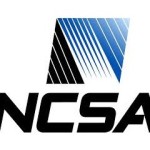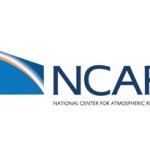Registration is now open for the 32nd International Conference on Massive Storage Systems and Technology (MSST 2016). As the premier conference for massive-scale storage systems, MSST offers designers and implementers, storage architects, researchers, and vendors an opportunity to share best practices and discuss building and securing the world’s largest storage systems for high-performance computing, web-scale systems, and enterprises.
Archives for February 2016
Registration Open for MSST Conference on Massive Storage Systems and Technology
Bull Builds Bura Supercomputer at University of Rijeka
Today Bull Atos announced it has successfully installed the most powerful supercomputer in the Adriatic region. Named after the Croatia North Wind, the new Bura supercomputer at the University of Rijeka will be used in biotechnological and biomedical research and will be available to institutions and companies from abroad.
UCX: An Open Source Framework for HPC Network APIs and Beyond
“Unified Communication X (UCX) is a set of network APIs and their implementations for high performance computing. UCX comes from the combined efforts of national laboratories, industry, and academia to co-design and implement a high-performing and highly scalable communication APIs for next generation applications and systems. UCX solves the problem of moving data memory location “A” to memory location “B” considering across multiple type of memories (DRAM, accelerator memories, etc.) and multiple transports (e.g. InfiniBand, uGNI, Shared Memory, CUDA, etc. ), while minimizing latency, and maximizing bandwidth and message rate.”
Registration Opens for NCSA 2016 Private Sector Partner Annual Meeting
Registration is now open for the NCSA 2016 Private Sector Partner Annual Meeting. Through NCSA’s Private Sector Program, the event brings together private, university, and government organizations with the shared goal of increasing competitiveness and economic impact through high-performance computing and data analytics.
Video: Dynamic Datacenter from Bright Computing
“Many organizations are gaining a competitive advantage by implementing a Dynamic Data Center strategy. In a dynamic data center compute resources may be dynamically created and/or provisioned based on workload demand in accordance with configured policies. Compute resources may be physical, on-premises nodes, or they may be virtual nodes in a public or a private cloud, or all of the above. In all cases, the resources are dynamically created and/or powered on and provisioned on-the-fly for a specific workload. This results in an agile data center that responds quickly and automatically to changes in workload demand, while reducing power costs.”
UberCloud Offers SaaS Service for ISVs on Microsoft Azure
Today the UberCloud announced plans to support independent software vendors (ISVs) in Computer Aided Engineering (CAE) with its new go-to-cloud service for the Microsoft Azure cloud platform. The service consists of containerizing the software provider’s software, developing a Software as a Service (SaaS) cloud business model, utilizing and tuning the ISV’s application software on Azure, testing and evaluating the cloud offer, and conducting marketing and sales initiatives together with the ISV.
Comet Supercomputer at SDSC Helps Confirm Gravitational Wave Discovery
The NSF-funded Comet supercomputer at SDSC was one of several high-performance computers used by researchers to help confirm that the discovery of gravitational waves before a formal announcement was made.
Slidecast: Making HPC Clouds Productive
In this video from the 2016 Stanford HPC Conference, Jason Stowe from Cycle Computing presents: Making Clouds Productive. “Nine years of Cloud HPC experiences has taught us a number of lessons about things like security, scale, workload planning, cost models, multi-users, multi-cloud, , and the difference between running one job versus multiple workflows in the cloud.”
Altair’s PBS Pro to Manage Workload for New NCAR Supercomputer
“Supercomputing is vital to NCAR’s research and this new system will be an important tool for researchers across the United States,” said Anke Kamrath, director of operations and services at NCAR’s Computational and Information Systems Laboratory. “It will enable enhanced understanding of weather and other natural processes, helping to make society more resilient.”
Video: Programming Models for Exascale Systems
“This talk will focus on programming models and their designs for upcoming exascale systems with millions of processors and accelerators. Current status and future trends of MPI and PGAS (UPC and OpenSHMEM) programming models will be presented. We will discuss challenges in designing runtime environments for these programming models by taking into account support for multi-core, high-performance networks, GPGPUs, Intel MIC, scalable collectives (multi-core-aware, topology-aware, and power-aware), non-blocking collectives using Offload framework, one-sided RMA operations, schemes and architectures for fault-tolerance/fault-resilience.”













